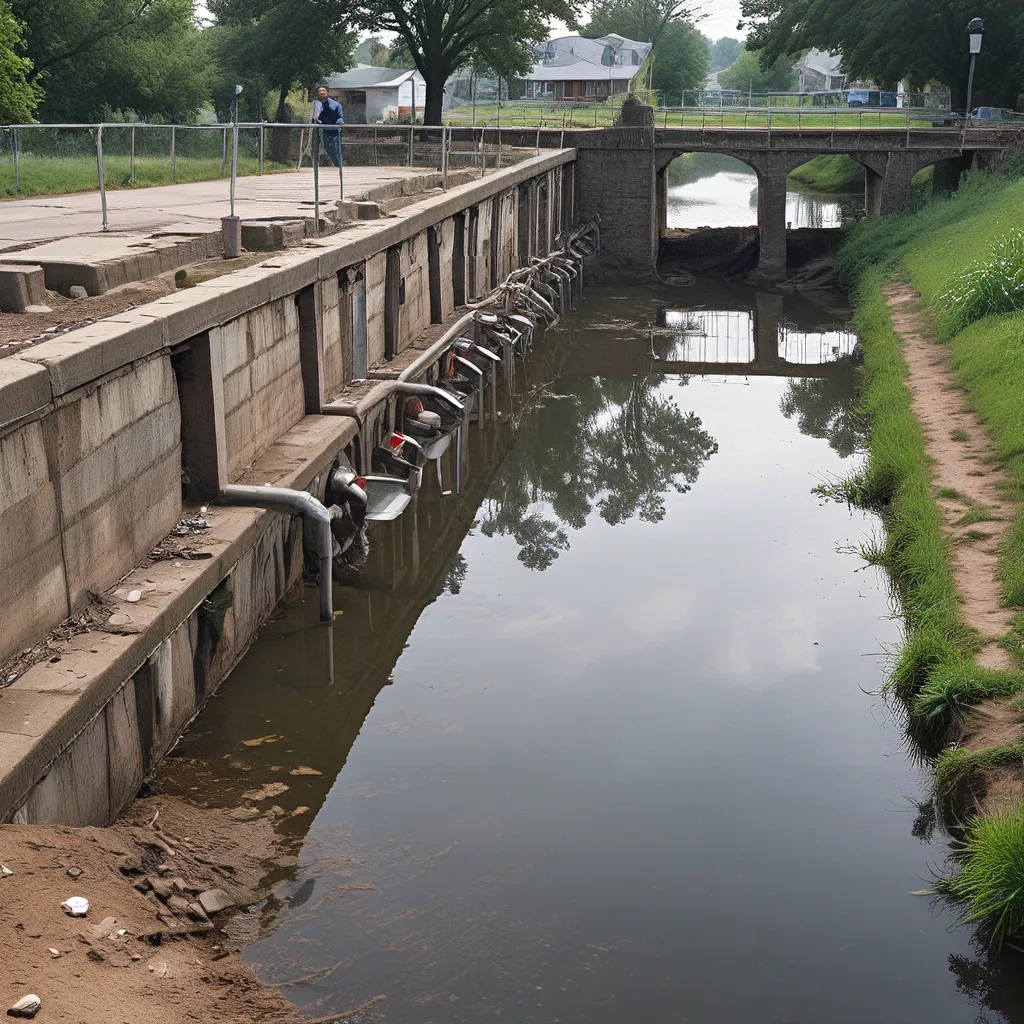
Uncovering the Hidden Treasures in our Sewers
As I flush the toilet, I can’t help but wonder – where does all that wastewater go? It’s a topic that most of us would rather not think about, but the truth is, there’s a wealth of valuable information hidden in those murky depths. Welcome to the fascinating world of wastewater-based epidemiology, where scientists are using the data from our sewers to uncover insights that could transform public health.
I know, it sounds a bit gross, but bear with me. What if I told you that the key to detecting emerging disease outbreaks, monitoring drug use, and even tracking the spread of COVID-19 could be found in our wastewater? It’s like taking a peek into the collective health of a community, and the potential applications are truly mind-boggling.
Let me give you an example. Imagine a scenario where a new virus starts spreading in a particular region. Instead of waiting for people to start showing up at the hospital, public health officials could analyze the wastewater from that area and detect the virus’s genetic material. This early warning system could allow them to take proactive measures and contain the outbreak before it becomes a full-blown epidemic. Pretty cool, right?
But it doesn’t stop there. Wastewater-based epidemiology can also be used to monitor the use of illicit drugs, prescription medications, and even the prevalence of certain diseases like the flu or polio. It’s like having a real-time pulse on the health and well-being of a community, all from the comfort of a sewage treatment plant.
The Rise of Wastewater Surveillance
Now, you might be wondering, how exactly does this work? Well, it all starts with the fact that every time we flush the toilet, we’re flushing away a little bit of ourselves – quite literally. Our bodily waste contains a wealth of biological information, including traces of the microorganisms, chemicals, and compounds that have passed through our systems.
By collecting and analyzing samples of wastewater, researchers can detect the presence of various substances and pathogens, and use that data to paint a comprehensive picture of population health. It’s a non-invasive, cost-effective way to gather insights that would be much more difficult (and expensive) to obtain through traditional epidemiological methods.
The use of wastewater surveillance has been steadily gaining traction in recent years, with applications ranging from monitoring the spread of infectious diseases to tracking the use of illicit drugs. During the COVID-19 pandemic, for example, wastewater analysis proved to be a valuable tool for detecting the presence of the SARS-CoV-2 virus and its variants, often before clinical cases were reported. This early warning system allowed public health officials to respond more quickly and effectively to emerging outbreaks.
But the potential of wastewater-based epidemiology extends far beyond infectious diseases. It can also be used to monitor the prevalence of chronic conditions, such as obesity and diabetes, by tracking the presence of specific biomarkers in the wastewater. This information could help public health agencies better understand the underlying drivers of these health issues and develop more targeted interventions.
The Challenges and Limitations
Of course, as with any emerging field, there are some challenges and limitations to wastewater-based epidemiology that need to be addressed. For one, the data can be influenced by factors like weather patterns, sewer infrastructure, and even the time of day when samples are collected. Ensuring the reliability and consistency of the data is crucial for drawing accurate conclusions.
There’s also the question of how to effectively translate the findings from wastewater analysis into meaningful public health interventions. While the data may point to certain trends or patterns, turning that information into actionable policies and programs requires a deep understanding of the social, economic, and environmental factors at play.
Additionally, the specialized equipment and expertise required for wastewater analysis can be a significant investment for some communities, particularly those with limited resources. Ensuring equitable access to these technologies and building the necessary infrastructure is an important consideration.
The Future of Wastewater Surveillance
Despite these challenges, the potential of wastewater-based epidemiology is undeniable. As our understanding of this field continues to grow, we’re likely to see even more innovative applications and breakthroughs. Imagine a future where we can use wastewater data to track the spread of antibiotic-resistant bacteria, monitor the effectiveness of public health interventions, or even detect the presence of emerging contaminants in our water supply.
The possibilities are truly endless, and I for one am excited to see how this field evolves. Who knows, maybe one day we’ll all be flushing with a sense of pride, knowing that our humble wastewater is playing a vital role in safeguarding the health of our communities.
So, the next time you take a trip to the restroom, remember – you’re not just flushing away your troubles, you’re contributing to a revolution in public health. It’s a pretty remarkable thought, don’t you think?